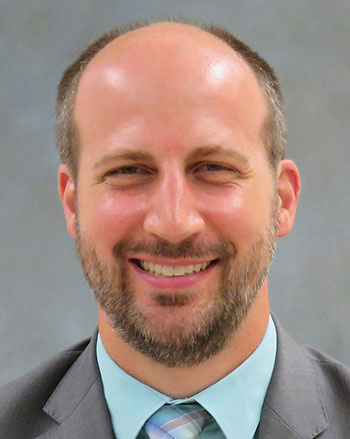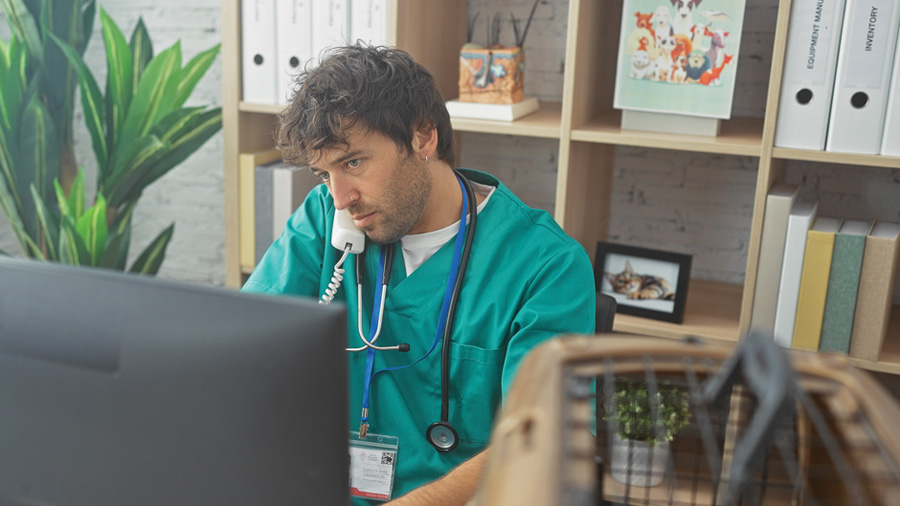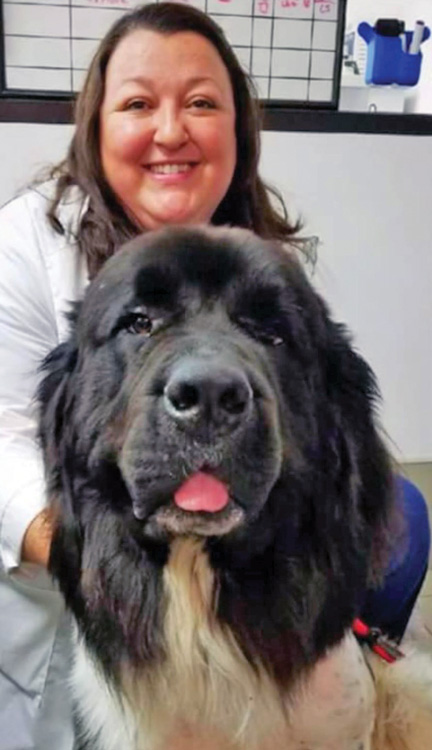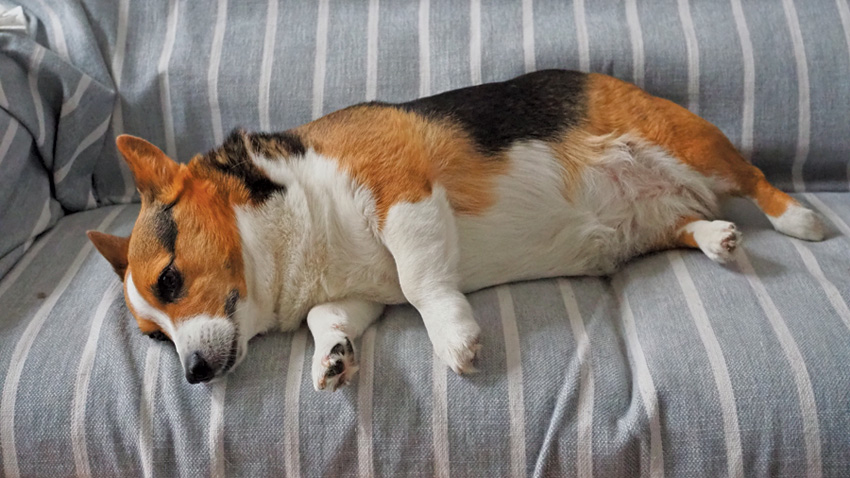Dr. Sander is an assistant professor in the Department of Veterinary Clinical Medicine and the director of the DVM/MPH Joint Degree Program.
Tell us about your background.
I always wanted to help those without a voice. That led me to wanting to work in wildlife and conservation medicine to protect the species that we all rely on but that often don’t get the same resources as the human species and our domesticated species. My career path has stayed centered around that, although I now also help people who need a voice, too.
Before veterinary school, I spent significant time doing wildlife rehabilitation in the Boston area. I then spent a year as an NIH Post-Baccalaureate Fellow, working with non-human primates on blood stem cell therapies, which gave me deep exposure to lab animal medicine and benchtop research.
Coming into veterinary school, I wanted to do clinical zoo medicine with significant research components, focusing on in situ conservation efforts internationally. I took all the electives, did all the wet labs, and loved all aspects of veterinary medicine, even epidemiology.
While progressing through my veterinary degree at University of Wisconsin, I discovered One Health and the bigger effect veterinarians can have at the population level. I knew I wanted additional training in that.
I did a one-year rotating small animal internship at VCA Aurora/Berwyn in the Chicago area, followed by an accelerated professional master’s in public health degree at Yale University, where I focused on global health while practicing in small animal/exotics practices.
While trailing my spouse, Dr. Sam Sander, a 2010 DVM alumna of Illinois, through her training experiences, I practiced two more years in small animal/exotics at VCA Aroma Park in Kankakee and VCA Herndon-Reston in northern Virginia.
During these times, I kept exploring public health opportunities, such as working with Purdue researchers on bovine veterinary injury surveys, teaching fourth-year veterinary students with Dr. Jack Herrmann at Illinois, volunteering with the Champaign-Urbana Public Health District, and creating manuals and materials for Smithsonian’s contribution to the PREDICT international project.
I loved practice but also still wanted to have that big, high-level impact. I spent two years as an American Association for the Advancement of Science (AAAS) Science and Technology Policy fellow in Washington, D.C., based in the Environmental Protection Agency. While there, I got to translate the science of pharmaceuticals found in the environment into policy and guidance on how to minimize the introduction of those foreign substances into the environment.
I followed that fellowship by supporting the Defense Threat Reduction Agency’s Biological Threat Reduction Program, part of the Department of Defense, as a government contractor. This got me back to my long-term interests of improving disease surveillance, improving health capacity for human and animal health, and working internationally. The program partners with more than 35 countries to strengthen their abilities to reduce the risk from highly pathogenic diseases in a very “One Health” approach.
I still continued with practice, working in Washington, D.C.’s, first wildlife rehab center, City Wildlife, for 5 years part-time. That combined with monthly vaccine and outreach small animal clinics for underserved populations in D.C. kept my hands on animals that needed the most help.
Washington, D.C., provided a fantastic place to build connections and networks and explore possibilities across the One Health spectrum. During this time, I also studied for and passed my boards to become a Diplomate in the American College of Veterinary Preventive Medicine.
Finally, the commute got to us, and we wanted to be closer to family and came back to the Midwest to the University of Illinois.
How did you become interested in preventive medicine and public health?
I have been interested in preventive medicine for a long time. My dad is a family practice physician, so I think that seed of preventive care happened early.
Veterinarians have such a unique, broad perspective that translates so well into population health, whether animal or human health. So it just seems to make sense to be in this field. I have always been an applied practitioner, so working in public health lets me do research that looks for solutions that can be applied to real-world problems right away and that can help more than one species.
What are your special interests?
My biggest special interest is emerging infectious diseases at the human-wildlife interface that takes into account how to find solutions that maximize biodiversity, supports local communities, and is sustainable over the long-term.
I am still early in this research process but have an ongoing collaboration with researchers and government officials in India looking at a tick-borne pathogen, Kyasanur Forest Disease.
My other big interest is veterinary public health education. All veterinarians should have a strong grounding in this field, especially given recent events. Veterinarians should understand how they can apply public health principles in their daily lives and how they can advocate for change at the policy level.
Since I became director of the college’s DVM/MPH joint degree program, I have started a new national alliance of veterinary public health educators. Our goal is to prepare these dual degree students for success and learn how can we better support all veterinary students in the areas of preventive medicine and public health.
Veterinarians can have a much larger contribution to this sector and should be helping lead these efforts.
You also provide support in the Wildlife Medical Clinic. Tell us about your interests there.
I am fortunate in that I can continue my long-term interest in wildlife medicine within the Wildlife Medical Clinic. It’s a great opportunity to work with so many of our wonderful veterinary students.
Although I only spend about 10 percent of my time there, it provides an avenue to share the benefits of my previous experiences at six wildlife rehab facilities. Wildlife rehab medicine is very different from zoo ambulatory or zoo companion animal medicine in terms of the goals, ethics, owners, and resources available.
In addition to the clinical aspects, I help mentor students on several wildlife projects. These include GIS mapping of the locations where wildlife orphans are found with the sociodemographic aspects of finders so we can better target outreach efforts; surveillance of Virginia opossums, both in the clinic and in the field, as sentinel indicators for human lead exposure; and looking at orphan presentation patterns and climate change over the past decade. These research projects provide great learning experiences (and publications) for our students and often lead to improved care in the clinic.




